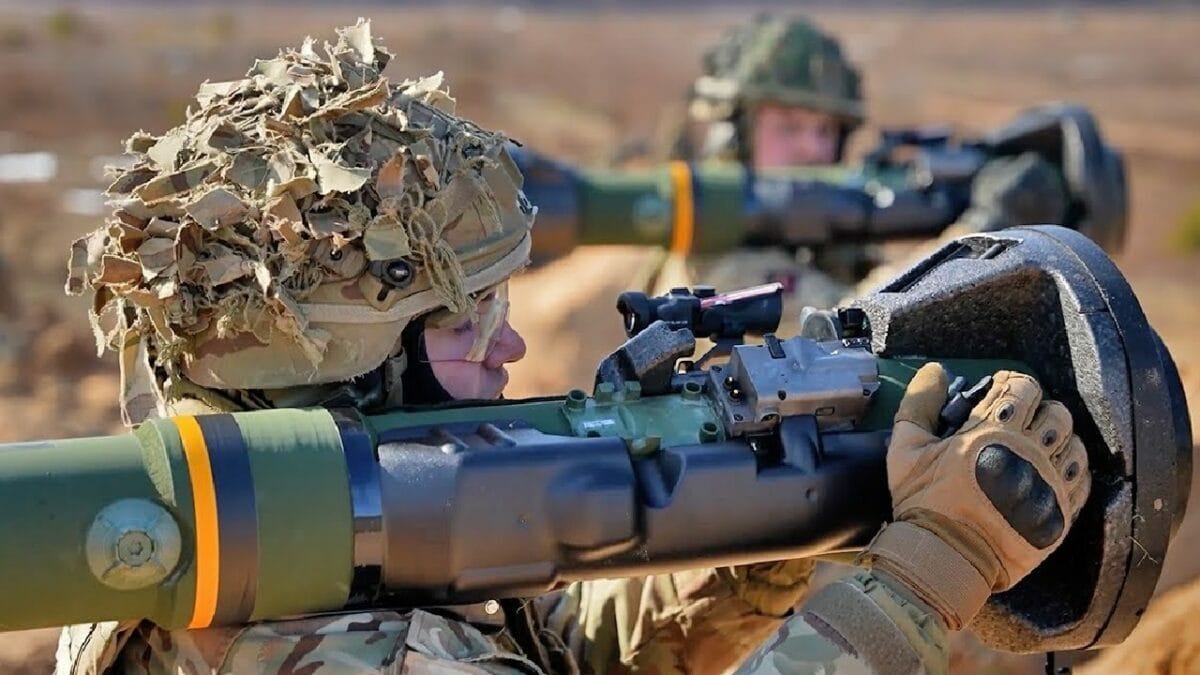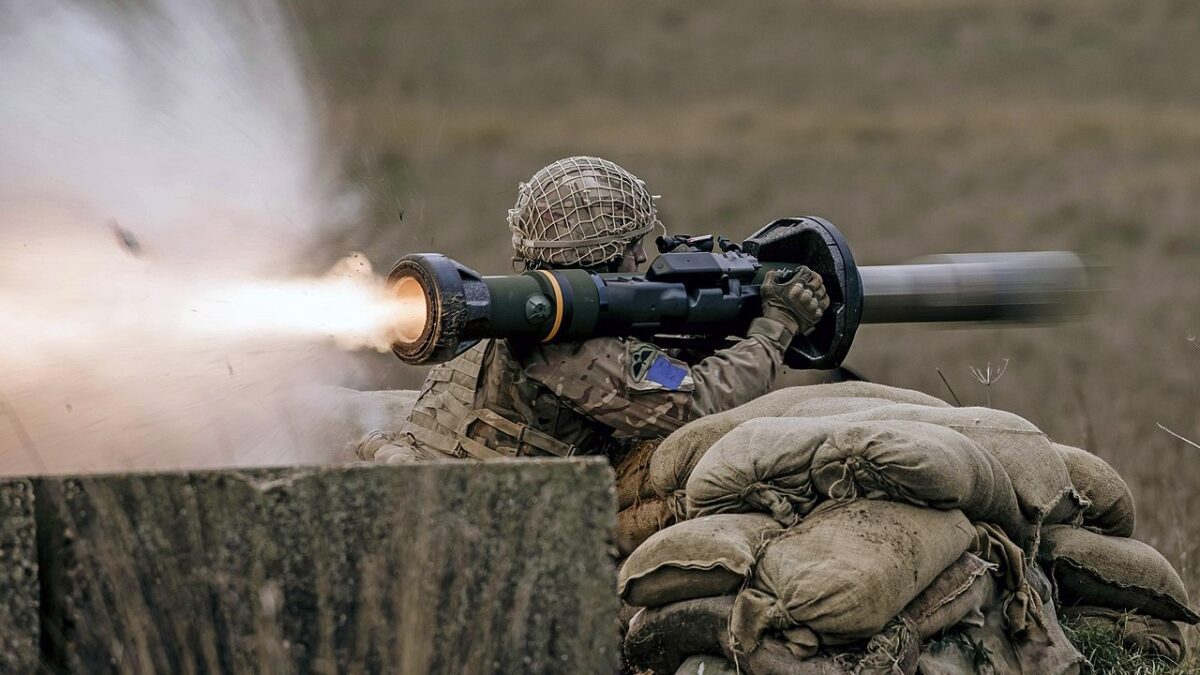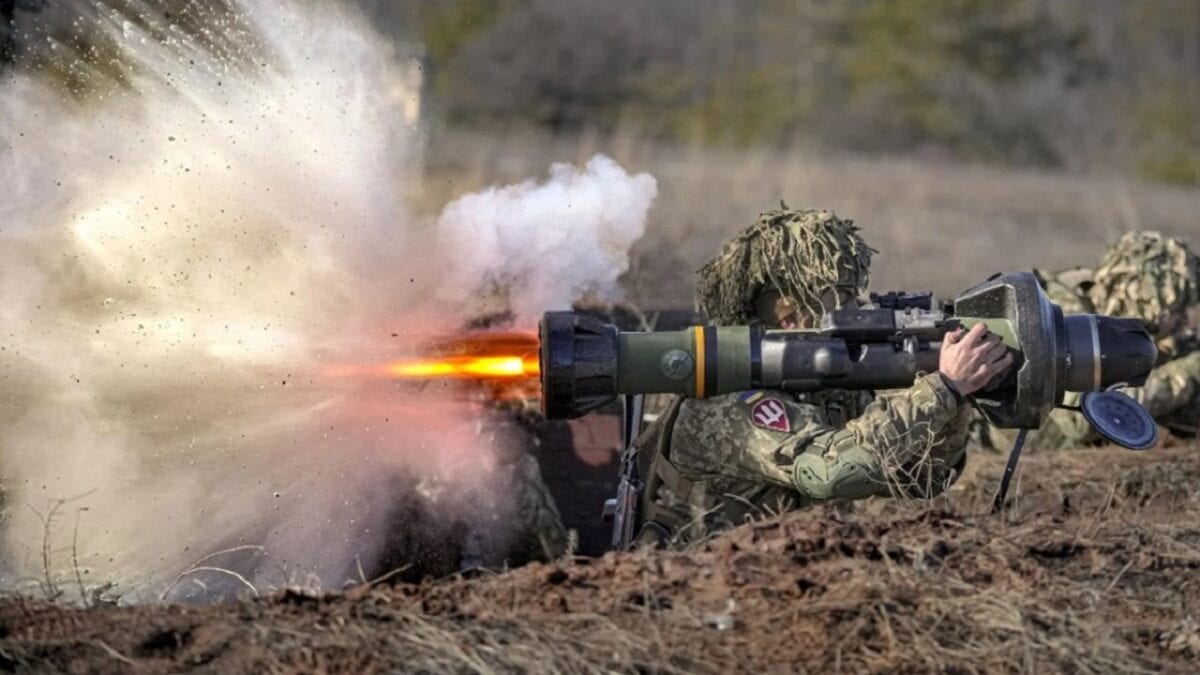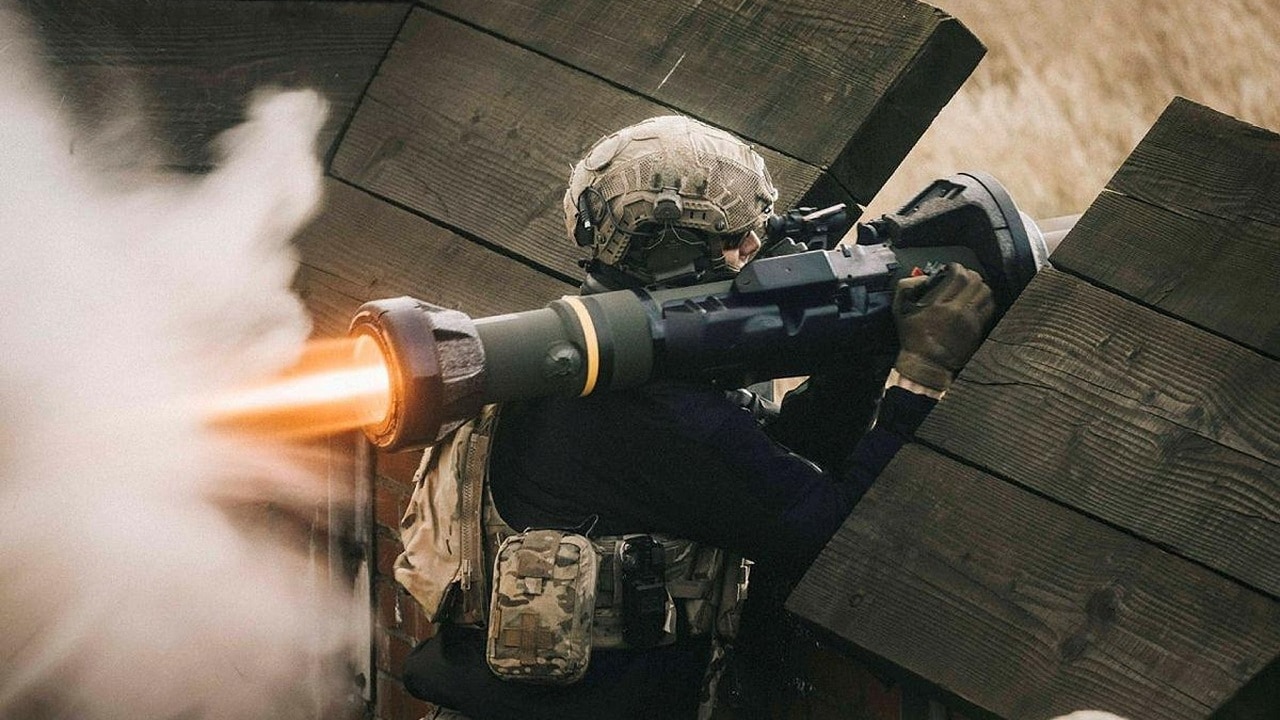Meet the NLAW: Since Russia first invaded Ukraine back in February 2022, the U.S. and other North Atlantic Treaty Organization (NATO) allies have contributed significantly to support Kyiv’s defensive efforts. America is by far the largest donor of military aid to Ukraine, providing over $46 billion in arms and equipment packages to the country over the last eighteen-month period.
In addition to modern Western main battle tanks (MBTs), NATO members have provided anti-tank missiles, munitions, airframes, and other military equipment to the frontlines of the ongoing war.
The delivery of the Saab Bofors Dynamics NLAW missile system has particularly proven to be a significant asset for Ukrainian forces.
Some analysts even argue that the NLAW weapons have been the most instrumental in thwarting the advance of Russian forces earlier on in the invasion.
The Origins of NLAW
After around a decade of development by contractor Saab Bofors Dynamics, the fire-and-forget missile system entered service in the Swedish, Finnish, and British armed forces in 2009.
The weapon was designed in a joint venture by the three countries, although the “NLAW” name refers to the initial UK development program, for which Saab was awarded the contract. Back in the late 1990s, the UK desired a man-portable, anti-tank weapon that could replace aging equipment. By the early 2000s, a memorandum of understanding was signed by Sweden and the UK, making NLAW a collaborative venture.
Specs and Capabilities
Similar to the American-made Javelin anti-tank missile launcher, NLAW features an onboard guidance system that enables its operators to remain undetected post-launch. NLAW aims its missile at the predicted position of the target, while the Javelin comparably uses infrared homing.
Additionally, NLAW has a shorter range than its American counterpart of roughly 1,000 meters, which is why it is more commonly used against armored vehicles in fire exchanges or in combat encounters. NLAW weighs a mere 12.5 kg, making it very easy to carry and fire. In fact, its light weight allows its operator to carry additional weapons including a rifle.
The NLAW operates in two modes, overfly top attack (OTA) and direct attack (DA). In the former, the missile follows a flight trajectory one meter above the line of sight prior to striking a target from an elevated perpendicular angle. In the latter, the missile follows a flight path and impacts the target head-on.
As explained by Army Technology, “The missile has an active magnetic and optical sensor activated proximity fuse. The sensor data is analyzed to match the known relevant target criteria before warhead initiation. The missile warhead is activated even against aluminum targets and partially concealed targets.”
Roughly 2,000 NLAW systems have been provided to Ukraine by the UK prior to Russia’s invasion. According to Kyiv, NLAW weapons accounted for approximately one-third of Russian tank losses in the early days of the war, making this system far more lethal than Ukraine’s stockpile of Soviet-era weapons.
While Russian-state media outlets have claimed that NLAW and its American Javelin counterpart have performed poorly on the battlefield, countless videos and other footage that have widely circulated on the internet prove otherwise.

NLAW anti-tank missile.

A member of 2nd Battalion, The Parachute Regiment fires a Next-generation Light Anti-tank Weapon (NLAW)…Paratroopers have demonstrated the firepower that they could bring to bear during combat missions as the British Army’s global response force. ..As the culmination of a course in support weapons skills, paratroopers staged a firepower demonstration on Salisbury Plain. ..The Next-generation Light Anti-tank Weapon (NLAW) is the first, non-expert, short-range, anti-tank missile that rapidly knocks out any main battle tank in just one shot by striking it from above…NLAW utilises predicted line of sight guidance and has overfly top and direct attack modes, and it is easy to use, making it a valuable tank destroyer for light forces that operate dismounted in all environments, including built up areas…It also has night vision capability and is designed for all climate conditions and environments..

NLAW. Image Credit: Creative Commons.
Maya Carlin, a Senior Editor for 19FortyFive, is an analyst with the Center for Security Policy and a former Anna Sobol Levy Fellow at IDC Herzliya in Israel. She has by-lines in many publications, including The National Interest, Jerusalem Post, and Times of Israel. You can follow her on Twitter: @MayaCarlin.
From 19FortyFive

